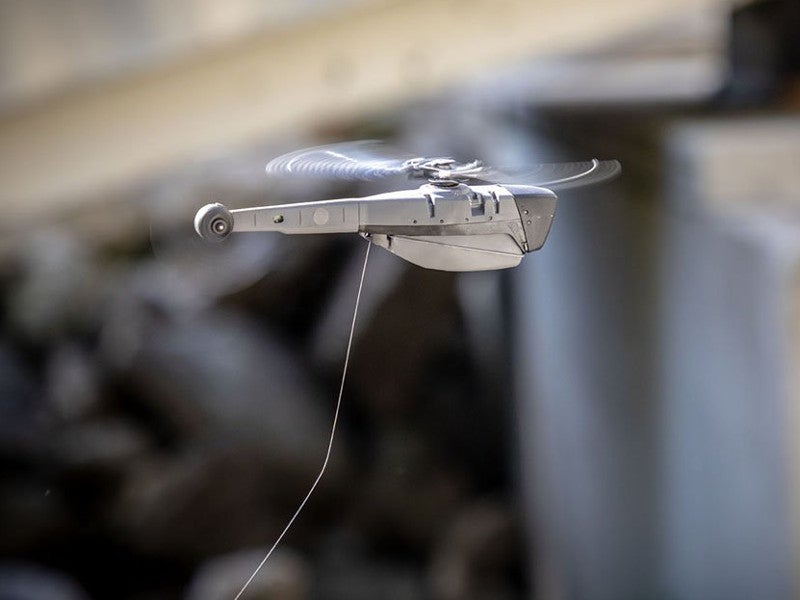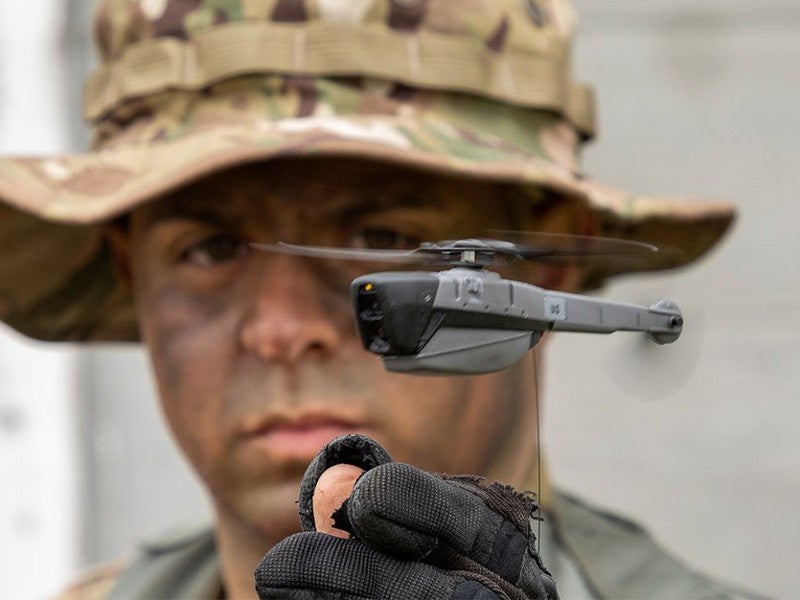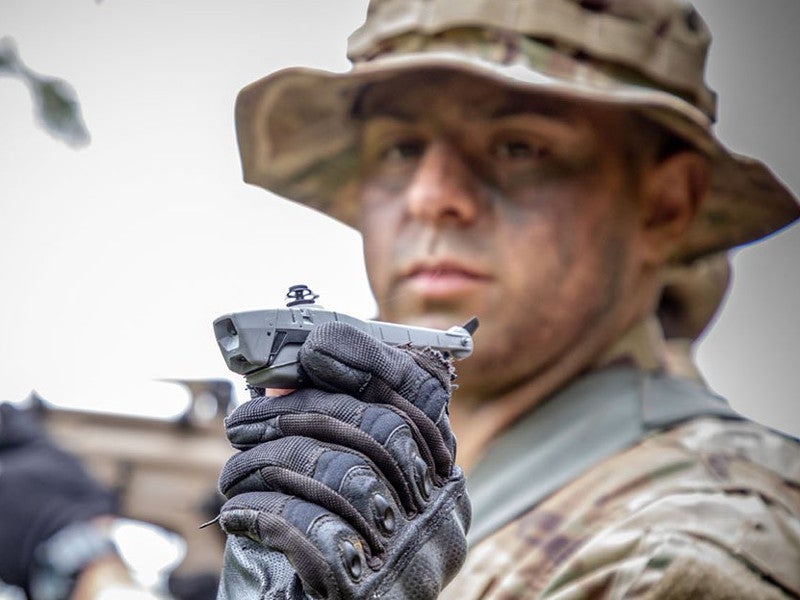Black Hornet personal reconnaissance system (PRS) is manufactured by FLIR Systems for use by military forces, government organisations, and disaster relief agencies across the world.
The PRS uses the Black Hornet 3 unmanned aerial vehicle, which is an upgraded version of the combat-proven Black Hornet PD-100.
The unmanned aircraft system (UAS) is designed to assist dismounted soldiers deployed on the battlefield. It enhances the situational awareness of the soldiers by acting as a dismounted covert soldier delivering all the key data on surroundings and will spy on enemy movements to ensure the safety of frontline soldiers.
More than 12,000 Black Hornet UAS have been delivered to defence and security forces across the world as of May 2020.
Orders and deliveries
The US Army awarded a $2.6m contract to FLIR Systems in May 2018 for the delivery of Black Hornet PRS under the Army’s Soldier Borne Sensor (SBS) programme. FLIR secured another contract worth $39.6m for the delivery of additional PRS units in support of the SBS programme in January 2019.
An additional $20.6m contract was awarded by the US Army for the Black Hornet PRS in May 2020.
FLIR was awarded an $89m contract by the French Defense Procurement Agency (DGA) to support the French Armed Forces’ French Operational Pocket Drone (DrOP) programme, in January 2019.
The Australian Army awarded a $6.8m contract to FLIR for delivery of Black Hornet PRS in October 2017. The units are intended to support platoon and troop level organic surveillance and reconnaissance capabilities.
Black Hornet 3 design and features
The PRS comprises two Black Hornet 3 UAVs and a ground-based control station. The Black Hornet 3 features a compact and rugged design and offers a pocket-sized solution to the covert operations. It is also touted to be the world’s smallest intelligence, surveillance, and reconnaissance (ISR) UAV platform.
Featuring a rotor diameter of 4.8in (123mm) and a length of 6.6in (168mm), the UAV weighs no more than 33g and offers best in class audio and visual detection signature.
The spectrum of applications that can be performed by the UAV include immediate ISR and covert operations, situational awareness, beyond line-of-sight (BLOS) reconnaissance, and force protection.
Its compact dimentions enable the vehicle to be carried by soldiers easily along with their combat gear. The UAV generates very less noise making it suitable for stealth operations. It is capable of operating in wind speeds ranging between 15kt and 20kt and in temperatures between -10ºC and 43ºC.
The time required for the launch of the UAV varies between 30 and 120 seconds based on the launch mode. The UAV can be operated in multiple flight modes including auto and manual hover and stare, route and user selectable waypoint actions, lost link, and automatic return.
Sensors and navigation system details of Black Hornet 3 UAV
Black Hornet 3 UAV features two electro-optic (EO) cameras and a fused thermal LED light night imager. It allows the soldiers to capture live videos and still images by expanding their visual range.
The navigational requirements of the UAV are served by the global navigation satellite system (GNSS). The unmanned aircraft can be optionally upgraded to vision-based navigation for GPS-denied indoor operation and embedded vector and raster maps. It also offers an encrypted data link with a radio range of 2km.
Ground control station of Black Hornet personal reconnaissance system
The Black Hornet PRS is controlled by a ground control station (GCS), which includes a base station, controller, and a display module. The base station can accommodate two nano Black Hornet 3 UAVs.
A one-handed controller can be integrated with the base station for the execution and analysis of mission plans. The mission data gathered by the UAVs is relayed to the Base station for further analysis.
The control station integrates high-quality, lightweight displays offering readability in broad daylight. The displays are powered by internal rechargeable batteries.
Power unit and performance
The Black Hornet nano UAV is equipped with a field replaceable battery, which powers the main rotor and the two-bladed tail rotor.
It can fly at a maximum speed of approximately 21.49km/h and offers a flight endurance of up to 25 minutes and a range of 2km.






